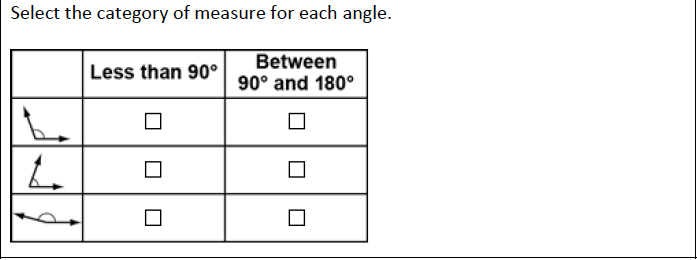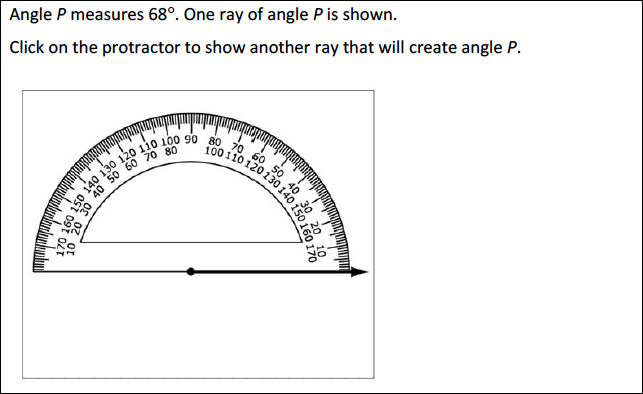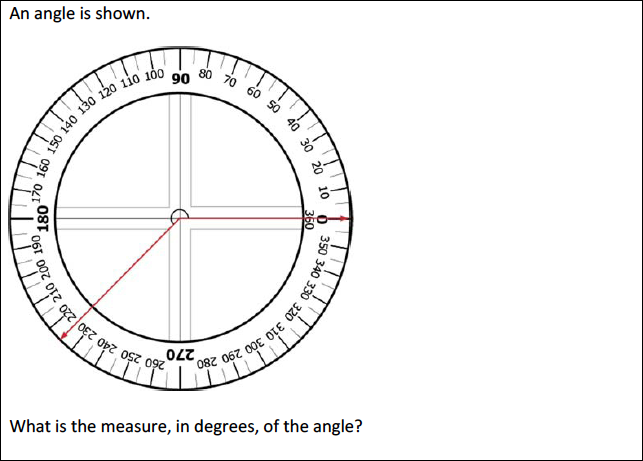Measure angles in whole-number degrees using a protractor. Sketch angles of specified measure.
[divider] [/divider]Students are able to…
- Understand what a protractor is and how it works.
- Use a protractor to measure angles accurately.
- Draw angles of a specific degree.
[divider] [/divider]Students are able to…because teachers:
- Connect a protractor to a circle and have students discuss how it can be used to measure degrees.
- Provide multiple opportunities for students to measure a variety of angles using a protractor.
- Pose situations where students have to sketch specific angles.
[divider] [/divider]Questions to ask students:
- Point to the numbers on a protractor. Ask, How do you know which number to use when measuring the angle?
- Sample answer that indicates understanding: I know when I looked that the angle that it was acute, so I would look at the numbers that are less than 90˚.
- Draw an angle with a measure of 75˚.
- Sample answer that indicates understanding: Student correctly draws an angle with the protractor that measures 75˚.
- Before a student measures with a protractor… Estimate the size of the angle using benchmark fractions or angles. Is this angle acute, right or obtuse? What does that mean for the measure of the angle?
- Sample answer that indicates understanding: When I look at this fraction it looks like half of a right angle. That makes me think that it will be close to 45˚. The angle is acute so I know it can’t measure more than 89˚ or less than 1˚ so 45˚ is a reasonable estimate for the angle measure.
[divider] [/divider]FSA Notes
Cognitive Complexity Level: 2 – Basic Application of Skills and Concepts
Achievement Level Descriptors:
2- recognizes angles as geometric shapes; recognizes angle measures with reference to a circle
3- measures angles using a protractor up to 180 degrees; sketches angles of specified measure
4- measures and identifies angles between 180 and 360 degrees
5- [intentionally left blank]
Assessment Limits:
Items may contain whole number degree measures within 0° and 360°.
For identification, angles are less than 360.
For construction, angles are less than 180.
Items may not require estimating the exact measures of angles.
[divider] [/divider]Additional Resources:
Additional in depth content knowledge
Video: Introduction to protractors
[divider] [/divider]Sample Formative Assessment Tasks:
Resources/Tasks to Help Your Child at Home
Using a protractor, have your child practice measuring the angles of different objects within your home. Also, give them a specific measurement from 1°-180° to draw using the protractor. (Remember to include angles that open to the right and angles that open to the left).
Banana Hunt Online Game – https://goo.gl/uzroge
Alien Angles Online Game – https://goo.gl/AQtpAG
Stargazing Online Game – https://goo.gl/CQresA




